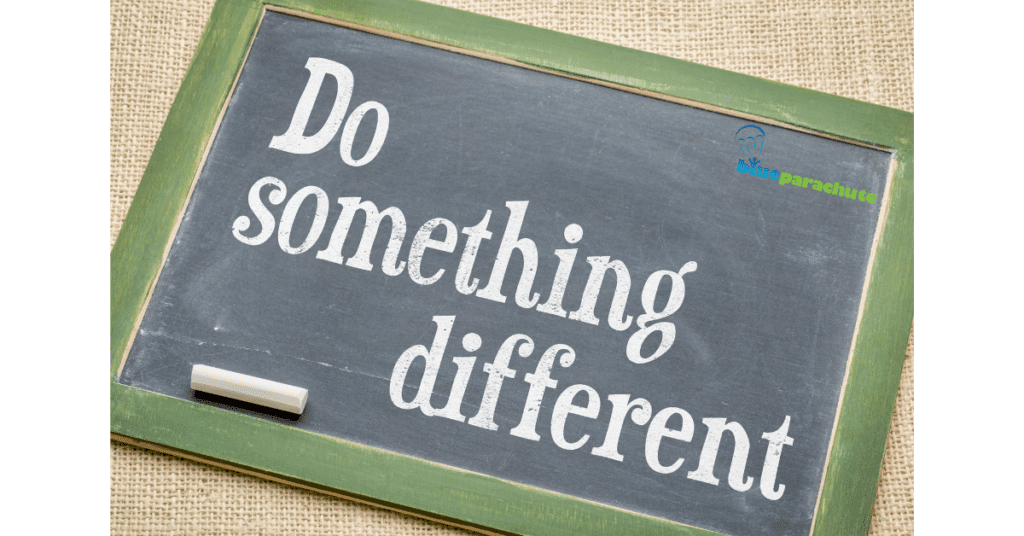Autism and Transitions: Navigating Smooth Transitions for Individuals With ASD
At Blue Parachute, we understand the unique challenges individuals with autism spectrum disorder (ASD) may face during transitions between activities. Smoothly transitioning is a crucial aspect of learning skills, and we’re here to provide insights and strategies for navigating these transitions effectively. This blog will delve into autism and transitions by exploring strategies to support individuals with ASD through various transitions and activities.
Autism Transition Strategies: Making Transitions Easier
For individuals with autism, transitions can be particularly challenging due to sensory sensitivities, difficulties with change, and communication barriers. Here are some effective strategies to make transitions easier:
Visual Schedules for Predictability
Visual schedules play a significant role in preparing individuals with ASD for upcoming transitions. By outlining the sequence of activities using images, symbols, or words, visual schedules offer predictability and reduce anxiety related to unfamiliar routines.
Transition Warnings and Countdowns
Let the individual know beforehand that they will be transitioning to a new activity. Countdowns, whether verbal or visual, help individuals anticipate the change and mentally prepare for the transition.
Use Transition Objects
Transition objects can act as a bridge between activities. Allowing individuals to hold a preferred item during the transition can provide comfort and ease the shift.
Social Stories for Understanding
Social stories are powerful tools that help individuals with autism understand abstract concepts like transitions. Create personalized social stories that explain the purpose of transitions and what to expect during each.
Why Are Transitions Hard for Those With ASD?
Transitions can be challenging for individuals with autism due to various reasons. Sensory sensitivities can make changes in the environment overwhelming. Moreover, difficulties with flexibility and communication can contribute to resistance during transitions. Understanding these challenges is essential to developing effective strategies.
How Do You Transition Between Activities With Autism?
Transitioning between activities for individuals with autism requires a tailored approach. Here’s how you can help:
Provide Clear Expectations
Communicate the upcoming transition clearly to the person, and let them know the expectations of the new activity. Use visual cues, verbal instructions, or both, depending on the individual’s communication preferences.
Offer Choices
Allow individuals to have a sense of control by offering choices during transitions. For example, “Do you want to transition now or in five minutes?”
Minimize Sensory Overload
Create a sensory-friendly transition environment by reducing sensory stimuli that might contribute to overload or anxiety.
Use Transition Supports
Visual supports, like timers or countdown clocks, can provide a tangible way for individuals to track the remaining time in the current activity and mentally prepare for the next one.
How Can Individuals With Autism Be Supported Through Transitions?
Supporting individuals with autism through transitions requires a combination of understanding, preparation, and practical strategies:
Individualized Approaches
Recognize that each individual with autism is unique, and what works for one person may not work for another. Tailor your approach based on their preferences and needs.
Consistency and Routine
Establish consistent routines whenever possible. Predictable routines provide a sense of security and reduce anxiety associated with transitions. Practice and Reinforcement
Practice transitioning in a structured and supportive environment. Reinforce positive behavior during transitions with praise, rewards, or preferred items.
Learning With ASD: Navigating Transitions With Blue Parachute
The videos available from Blue Parachute are a form of autism home support services. They are a resource for individuals with autism spectrum disorder, and those who assist them, to enhance their learning and development. Our instructional videos, created by Licensed and Certified Behavior Therapists, cover various aspects of learning skills, including successful transitions. We designed these videos to support individuals with ASD in adapting to changes and transitioning between activities seamlessly.
Explore our library of video resources and find the subscription pricing plan that aligns with your needs. If you have more questions, you can find many of the answers on our FAQ page, or use our online form and contact us today. With the power of evidence-based strategies and content, individuals with ASD can overcome challenges during transitions and experience greater independence.
Related Readings:
Sources:
Autism Speaks – Transition Toolkit
PBS Kids for Parents – Helping Children With Autism Handle Everyday Transitions
Indiana Resource Center for Autism – Transition Time: Helping ASD Individuals


